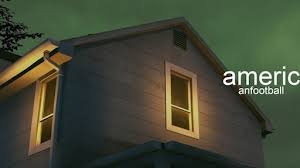
american football house
What Is “American Football House”?
American Football House refers to a now-iconic house located in Urbana, Illinois, featured on the cover of the debut self-titled album by the emo/math rock band American Football. Released in 1999, the album has since become a cult classic, and the house itself evolved into a symbol of emotional depth, DIY indie music, and a generation’s nostalgia. Over time, fans began to treat the house not just as a visual from an album cover—but as a pilgrimage site and emotional landmark.
The Band Behind the House: American Football
American Football is an Illinois-based band formed in 1997 by Mike Kinsella, Steve Lamos, and Steve Holmes. Known for their intricate guitar work, off-time rhythms, and emotional lyrical themes, the band helped define the Midwest emo sound. Though they initially disbanded after releasing just one album, their 1999 debut grew in influence over the years and is now considered a cornerstone of modern emo music. They later reunited and released follow-up albums in 2016 and 2019, both of which also featured versions of the house imagery.
The Iconic Album Cover
The debut album cover for American Football features a photo of a simple two-story house with a lit second-floor window—taken at night and framed in soft tones. That house, now widely known as the American Football House, became instantly recognizable among fans of indie and emo music. The cover’s quiet, domestic stillness perfectly reflected the band’s introspective sound. Over time, the image grew beyond its musical origins and became part of alternative youth culture.
View the original album on Wikipedia
Where Is the American Football House Located?
The house is located in Urbana, Illinois, near the University of Illinois campus. Its actual address has been publicly revealed as 704 W High Street, although the band has occasionally asked fans to be respectful of the private residence. Originally rented by members of the band and their friends during college, the house later became owned by unrelated residents, but fans from across the country (and world) still visit it to snap photos or quietly reflect.
Why Is the House So Famous?
The house gained fame for several reasons:
- Emotional symbolism: The cover photo reflects the melancholic and intimate tone of the music.
- Authenticity: It’s a real house, not a staged set, representing the raw, DIY feel of the late ’90s emo scene.
- Cultural meme: As emo music grew online, the house became a kind of meme for sad, nostalgic energy.
- Fan pilgrimages: Visitors began making quiet trips to the house, often reenacting the photo from the album cover.
Over time, the house’s importance transcended the band—it became a piece of indie music history and a physical symbol of emotional coming-of-age experiences.
Connection Between the Music and the House
The music of American Football—especially on their 1999 debut—is known for being intimate, wistful, and deeply personal. Songs like “Never Meant” and “Honestly?” explore themes of longing, missed connections, and youthful confusion. The house on the album cover became a metaphor for that emotional space: a quiet, lived-in place where feelings linger.
Listen to “Never Meant” on YouTube
In interviews, Mike Kinsella has described the house as a regular college rental with no deeper meaning. But like much of art, its power came from what the audience saw in it. The album’s minimal lyrics and mathy guitar work gave fans room to project their own memories, heartbreaks, and transitions—making the house a blank canvas for emotional memory.
Fan Culture and Pilgrimage
As the album gained legendary status in the 2010s, fans began making trips to Urbana to see the house in person. Many would stand outside, photograph the exterior, and even light the upstairs window at night to recreate the album cover. Social media posts tagged with #AmericanFootballHouse began to grow, and the location became part of alternative music tourism.
Eventually, the band and the current owners of the house acknowledged the interest but kindly asked fans to be respectful. It’s important to remember that the house is private property, not a museum, and visitors should never trespass or disturb residents.
The House in Later Albums
The American Football House continued to appear in various forms on later releases:
- American Football (LP2) – 2016: The album cover featured a modernized, interior shot of a house—more polished but still emotionally heavy.
- American Football (LP3) – 2019: The band moved away from the original house imagery, but the mood remained similar, emphasizing space, memory, and reflection.
Though the original house only appeared in full on the first album, its presence loomed over all of their work. The band even sold American Football House merchandise, further solidifying its identity.
Shop American Football merch on Polyvinyl Records
American Football House in Pop Culture and Memes
Beyond music, the house has taken on a second life in internet culture:
- Memes and parodies: Fans have created thousands of variations of the album cover with the house replaced by everything from the SpongeBob pineapple to The Simpsons home.
- Reddit and Tumblr fandoms: Emo and Midwest emo forums often share fan art, recreations, and emotional testimonials about the house.
- Vinyl and cassette collectors: Limited editions of the debut album with variations on the house artwork are highly sought after.
It’s rare for a building to become a part of musical iconography—but the American Football House has done exactly that.
Visiting the House (Respectfully)
If you plan to visit the house, here are a few things to keep in mind:
- Do not knock or approach the door—respect the privacy of the current residents.
- Take your photos from the sidewalk—that’s where the original photo was taken.
- Go during the day—there’s no need to recreate the lit window shot at night.
- Be quiet—it’s a residential area, not a tourist attraction.
- Support the band—buy merch, music, or stream their work legally to show appreciation.
The best way to honor the house is by continuing to share and celebrate the music it represents.
Why It Still Resonates Today
The emotional impact of American Football’s music hasn’t faded. In fact, new generations are discovering the band through Spotify, TikTok, and YouTube. Many people still find deep emotional resonance in the sound of clean guitars, intricate rhythms, and quiet vocals. The American Football House has come to symbolize timeless vulnerability, nostalgia, and the quiet sadness of growing up.
Even for those who weren’t around in 1999, the image of that simple house with a glowing window still speaks volumes about what it means to feel lost, hopeful, and human.
Conclusion: The House That Held Our Feelings
The American Football House is more than just architecture. It’s a shared memory, a cultural icon, and an emotional landmark for those who found comfort in the soft math-rock guitar lines and quietly devastating lyrics of American Football’s debut album. It’s a house that held our feelings—real or imagined—and reminded us that even ordinary places can become extraordinary when tied to the right song.






